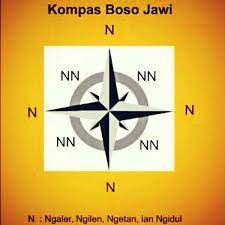Madureso Tradition Becomes a Marriage Taboo for Prospective Brides in Sucen Area, Bayan Sub-District, Purworejo City
DOI:
https://doi.org/10.59698/quru.v1i1.95Keywords:
Madureso, Tradition, Purworejo, AbstinenceAbstract
This research is motivated by the culture of the community that still holds customs and is considered a hereditary tradition, they must preserve it should not be abandoned let alone removed. Although socially the current society is very modern, but in certain areas still find traditions that are held firmly by the community regarding the prohibition of madureso marriage which is still carried out until now. Madureso marriage is a prohibition of marriage where parents or elders do not allow their children to marry someone who has the same direction of the house facing mojok wetan or northeast of such a marriage prohibition. This research is a field rieserch and to collect information through interviews with the community and make observations to the place in order to know the implementation directly. The research uses descriptive-analytical analysis techniques. The conclusion is that the prohibition or restriction of marriage has actually been believed or has been followed by the residents of Sucen Purworejo from generation to generation from ancestors. Therefore, the residents of sucen Purworejo believe and do not marry if the bride and groom have a house facing each other. Because they believe that if they violate it, there will be a disaster in the marriage they do.
References
Ambarwati, Alda Putri Anindika, and Indah Lylys Mustika. “Pernikahan Adat Jawa Sebagai Salah Satu Kekuatan Budaya Indonesia.” In Prosiding Seminar Nasional Bahasa Dan Sastra Indonesia (SENASBASA), 2:h. 18., 2018.
Atabik, Ahmad, and Khoridatul Mudhiiah. “Pernikahan Dan Hikmahnya Perspektif Hukum Islam.” YUDISIA: Jurnal Pemikiran Hukum Dan Hukum Islam 5, no. 2 (2016).
Harisudin, M Noor. “’Urf Sebagai Sumber Hukum Islam (Fiqh) Nusantara.” Jurnal Ushuluddin: Media Dialog Pemikiran Islam 20, no. 1 (2017): 66–86.
Hasbiansyah, OJMJK. “Pendekatan Fenomenologi: Pengantar Praktik Penelitian Dalam Ilmu Sosial Dan Komunikasi.” Mediator: Jurnal Komunikasi 9, no. 1 (2008): 163–80.
Kamal, Fahmi. “Perkawinan Adat Jawa Dalam Kebudayaan Indonesia.” Khasanah Ilmu-Jurnal Pariwisata Dan Budaya 5, no. 2 (2014).
Kurniawan, Alif Chandra. “Mitos Pernikahan Ngalor-Ngulon Di Desa Tugurejo Kecamatan Wates Kabupaten Blitar: Kajian Fenomenologis.” Universitas Islam Negeri Maulana Malik Ibrahim, 2012.
Landrawan, I Wayan, and I Putu Windu Mertha. “Fenomena Pantangan Perkawinan Ngalor Ngulon Bagi Masyarakat Desa Tambakrejo Dalam Perspektif Tokoh Adat Dan Masyarakat.” Jurnal Budaya Nusantara 5, no. 2 (2022): 68–74.
Mahfudin, Agus, and S Moufan Dinatul Firdaus. “Analisis Teori Maslahah Mursalah Terhadap Tradisi Larangan Pernikahan Ngalor-Ngulon Masyarakat Adat Jawa.” Jurnal Hukum Keluarga Islam 7, no. 1 (2022): 33–49.
Mappasere, Stambol A, and Naila Suyuti. “Pengertian Penelitian Pendekatan Kualitatif.” Metode Penelitian Sosial 33 (2019): h. 45.
Mustopa, Fendi Bintang. “Tinjauan Hukum Islam Terhadap Larangan Pernikahan Adat Jawa Jilu Studi Kasus Di Desa Tanggan Kecamatan Gesi Kabupaten Sragen.” Legitima: Jurnal Hukum Keluarga Islam 2, no. 1 (2019): 40–58.
Rahmawati, Emi, and Fafi Masiroh. “Fenomena Tradisi Pantangan Pernikahan Ngalor-Ngetan.” Al-Mada: Jurnal Agama, Sosial, Dan Budaya 3, no. 2 (2020): 241–59.
Santoso, Santoso. “Hakekat Perkawinan Menurut Undang-Undang Perkawinan, Hukum Islam Dan Hukum Adat.” YUDISIA: Jurnal Pemikiran Hukum Dan Hukum Islam 7, no. 2 (2016): 412–34.
Subekti, Trusto. “Sahnya Perkawinan Menurut Undang-Undang Nomor 1 Tahun 1974 Tentang Perkawinan Ditinjau Dari Hukum Perjanjian.” Jurnal Dinamika Hukum 10, no. 3 (2010): 329–38.
Syafingi, Chalwan. “Larangan Perkawinan Ngalor-Ngulon Dalam Adat Jawa Di Desa Leses Kabupaten Klaten Perspektif Sadd Ad-Dzariah.” MISYKAT Jurnal Ilmu-Ilmu Al-Quran Hadist Syari Ah Dan Tarbiyah 5, no. 2 (2020): 99–114.
Tamam, Badrut, and Risna Ismawati. “Tradisi Larangan Nikah Ngalor Ngulon Di Daerah Purwoharjo Banyuwangi Perspektif Teori Sistem Jasser Auda.” Mahakim: Journal of Islamic Family Law 6, no. 2 (2022): 101–25.
Thalib, Muhammad. Manajemen Keluarga Sakinah. Yogyakarta : Pro-U Media,2008,Cet,II, 2007.
Wulansari, Catharina Dewi, and Aep Gunarsa. Hukum Adat Indonesia: Suatu Pengantar. Refika Aditama, 2016.
Yuliana, Eka, and Ashif Az Zafi. “Pernikahan Adat Jawa Dalam Perspektif Hukum Islam.” Al-Mashlahah Jurnal Hukum Islam Dan Pranata Sosial 8, no. 02 (2020): 315–26.
Zainuddin, Faiz. “KONSEP ISLAM TENTANG ADAT: Telaah Adat Dan’Urf Sebagai Sumber Hukum Islam.” Lisan Al-Hal: Jurnal Pengembangan Pemikiran Dan Kebudayaan 9, no. 2 (2015): 379–96.
Undang-Undang No. 1 Tahun 1974 Tentang Perkawinan
Wawancara dengan Ibu Lilis, pada tanggal 29 April 2023
Wawancara dengan Bapak Slamet, pada tanggal 29 April 2023
Wawancara dengan Bapak Ulama, pada tanggal 30 April 2023
Wawancara Bapak Wagino , pada tanggal 30 April 2023

Downloads
Published
How to Cite
Issue
Section
License
Copyright (c) 2023 QURU’: Journal of Family Law and Culture

This work is licensed under a Creative Commons Attribution-ShareAlike 4.0 International License.
Quru': Journal of Family Law and Culture





.png)







